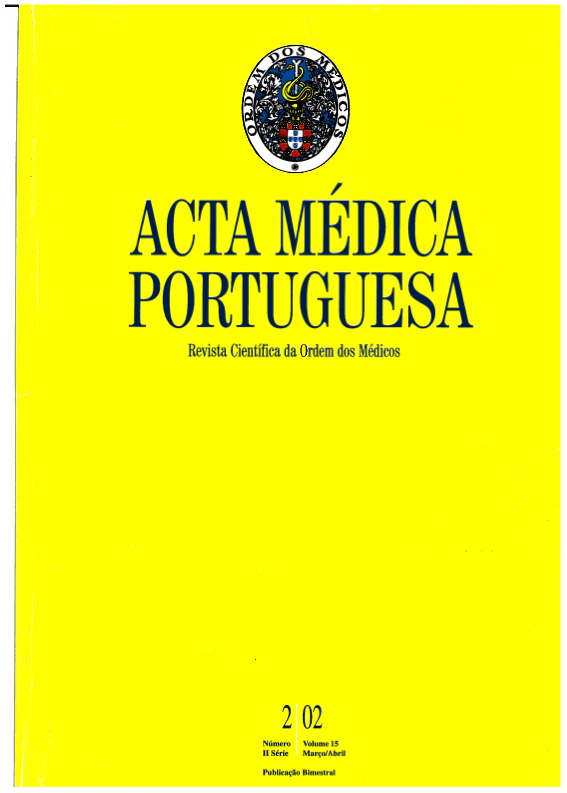Craniopharyngiomas. Clinicopathological aspects in different age groups.
DOI:
https://doi.org/10.20344/amp.1919Abstract
Craniopharyngiomas are rare brain tumors of the hypothalamo-pituitary region, developing from embryonic remnants of Rathke's pouch and sac. Their overall incidence is 0.13 per 100,000 person years. Most frequently, they are suprasellar, start growing in childhood and originate neurological and hormonal symptoms. We retrospectively studied patients treated in our institution for craniopharyngioma in the last 10 years, in order to evaluate their clinical, imaging and pathological characteristics. Of the 32 patients analysed, 18 were females and 14 males with ages ranging between 6 and 81 years (early onset group--EOG aged 5-14 years: 7 patients; middle age onset group--MAOG aged 15-49 years: 15 patients; late age onset group--LOG aged > or = 50 years: 10 patients). Visual impairment was the most frequent presenting clinical feature in EOG (71.4%) and MAOG (86.6%), while in the LOG personality and cognitive changes including memory loss predominated (60%). Headaches were very frequent in all groups (EOG 42.8%, MAOG 60%, LOG 40%). Meningitis and seizures were presenting features, each in one patient. Regarding endocrine symptoms and signs, growth failure was present in 57.2% of the EOG. Amenorrhea was present in 5 of 10 female patients of the MAOG. Preoperatively, TSH was deficient in 25%, ACTH in 15.6% and gonadotropin in 25% of the patients. There were no cases of diabetes insipidus. Preoperative CT and MR revealed a calcified mass in 12 (37.5%), a partially cystic mass in 20 (62.5%) and a lesion involving or extending into the third ventricle in 7 (21.9%) patients. Twenty seven (84.4%) patients were treated primarily by surgery. In 4 (12.5%) cases the tumour was considered inoperable and 1 (3.1%) patient refused surgery; all were in the LOG. Surgical approach was transsphenoidal in 2/27 (7.4%) (all of them in the LAOG) and by craniotomy in the others. The tumour removable was considered complete in 10 (37%--EOG 2/7, MAOG 6/15, LOG 2/5) and subtotal in 17 (62.9%) patients. Eight (29.6%) patients were reoperated for recurrent tumour. Postoperative radiotherapy was administered in 12 cases with residual tumor, and 3 inoperable tumors were treated primarily by conventional external radiotherapy. Pathological study revealed the adamantinomatous type in 25 (92.6%) and the papillary type in 2 (7.4%--all men in the MAOG) tumors. The average follow-up was longer in the EOG (82.6 +/- 40.7 months) than in MAOG (57.2 +/- 48.5 months) and in LOG (48 +/- 92 months). Four (12.5%) patients died, 1 during the follow-up period due to a radiation-induced astrocytoma and 3 in the postoperative period because of cerebral hemorrhage and hydrocephalus (1 in the EOG and 2 in the LOG). In summary, we found the clinical presentation to be different in the 3 age groups, with a large number of patients in the MAOG. In this group were the only examples of the papillary form. Better prognosis was associated with a total resection at initial surgery.Downloads
Downloads
How to Cite
Issue
Section
License
All the articles published in the AMP are open access and comply with the requirements of funding agencies or academic institutions. The AMP is governed by the terms of the Creative Commons ‘Attribution – Non-Commercial Use - (CC-BY-NC)’ license, regarding the use by third parties.
It is the author’s responsibility to obtain approval for the reproduction of figures, tables, etc. from other publications.
Upon acceptance of an article for publication, the authors will be asked to complete the ICMJE “Copyright Liability and Copyright Sharing Statement “(http://www.actamedicaportuguesa.com/info/AMP-NormasPublicacao.pdf) and the “Declaration of Potential Conflicts of Interest” (http:// www.icmje.org/conflicts-of-interest). An e-mail will be sent to the corresponding author to acknowledge receipt of the manuscript.
After publication, the authors are authorised to make their articles available in repositories of their institutions of origin, as long as they always mention where they were published and according to the Creative Commons license.









